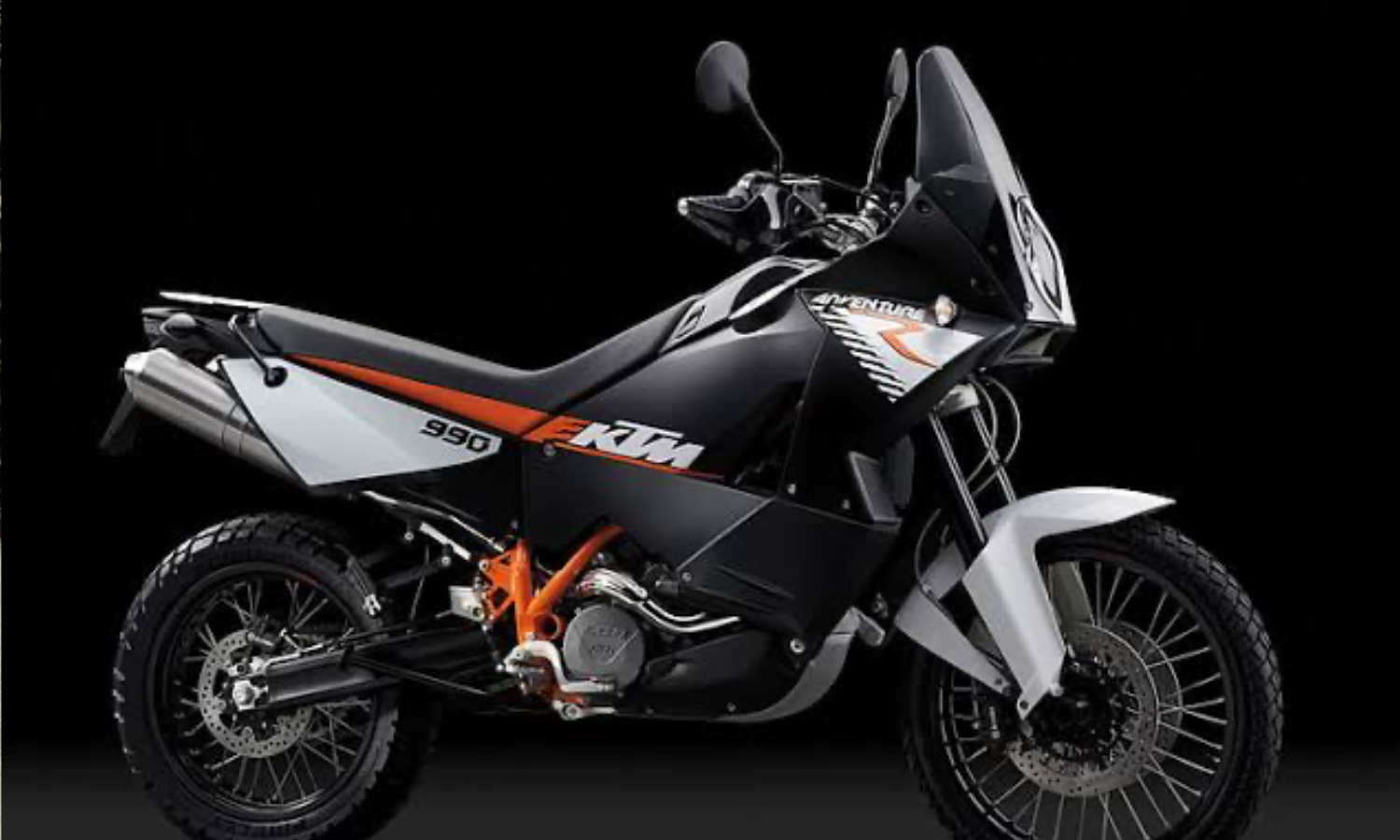
KTM 990 Adventure Review: The Cult Classic That Still Rips
Share your love
A Review of the KTM 990 Adventure
I get a lot of questions and comments about my bike – almost exclusively from riders who have never swung a leg over a KTM 950 or 990. This review is for the rider who in 2025 remains intrigued, curious and open-minded (or simply seeks a self-soothing echo-chamber of confirmation bias). This review is both for 9X0 and non-9X0 riders.
A (Very) Brief History
The mentality of KTM is perhaps best summarised in a single sentence: ‘The manufacturer boasts 18 consecutive wins of the Dakar Rally from 2001 to 2019.’ Performance has always been at the core of the company.

Enter the 950
The KTM 950 LC8 motor was developed in the late 90s by a couple of students who slapped together two single cylinder KTM LC4 engines as part of an experiment. Soon thereafter, KTM built a racing machine around that same crazy LC8 motor experiment with high expectations for the Dakar Rally. Fabrizio Meoni then famously won the race in 2002 on his 950 shortly prior to organisers introducing engine displacement restrictions to curb elevated top speeds of the bigger capacity rally bikes (+200km/h).
The 950 was commercially produced between 2003 and 2006 – a relatively short period in contrast with 990s that were produced from 2006 to 2012.
There are essentially three models of the 950: the 950 Adventure, the 950 Adventure S, and the 950 Super Enduro. Both Adventure models feature the same rally styling with the exception of the S model’s taller suspension (and the paint job – obviously). The Super Enduro is a lighter, more naked design (think BMW HP2 vs BMW GS). All three models feature the same motor.
Similarly, there are essentially three 990 models: the 990 Adventure, the 990 Adventure S, and the 990 Adventure R. Whilst all models share the same motor, post-2009 models feature revised cams which upped power output from 105hp to 113hp. By and large, the 990 Adventure features ABS whilst the S and R models do not.
950s and 990s are near identical, with only a handful of differences, most notably that 950s are carbureted, whereas 990s are fuel injected. Both run on essentially the same motor and share most parts (roughly 80% of parts are cross-compatible).
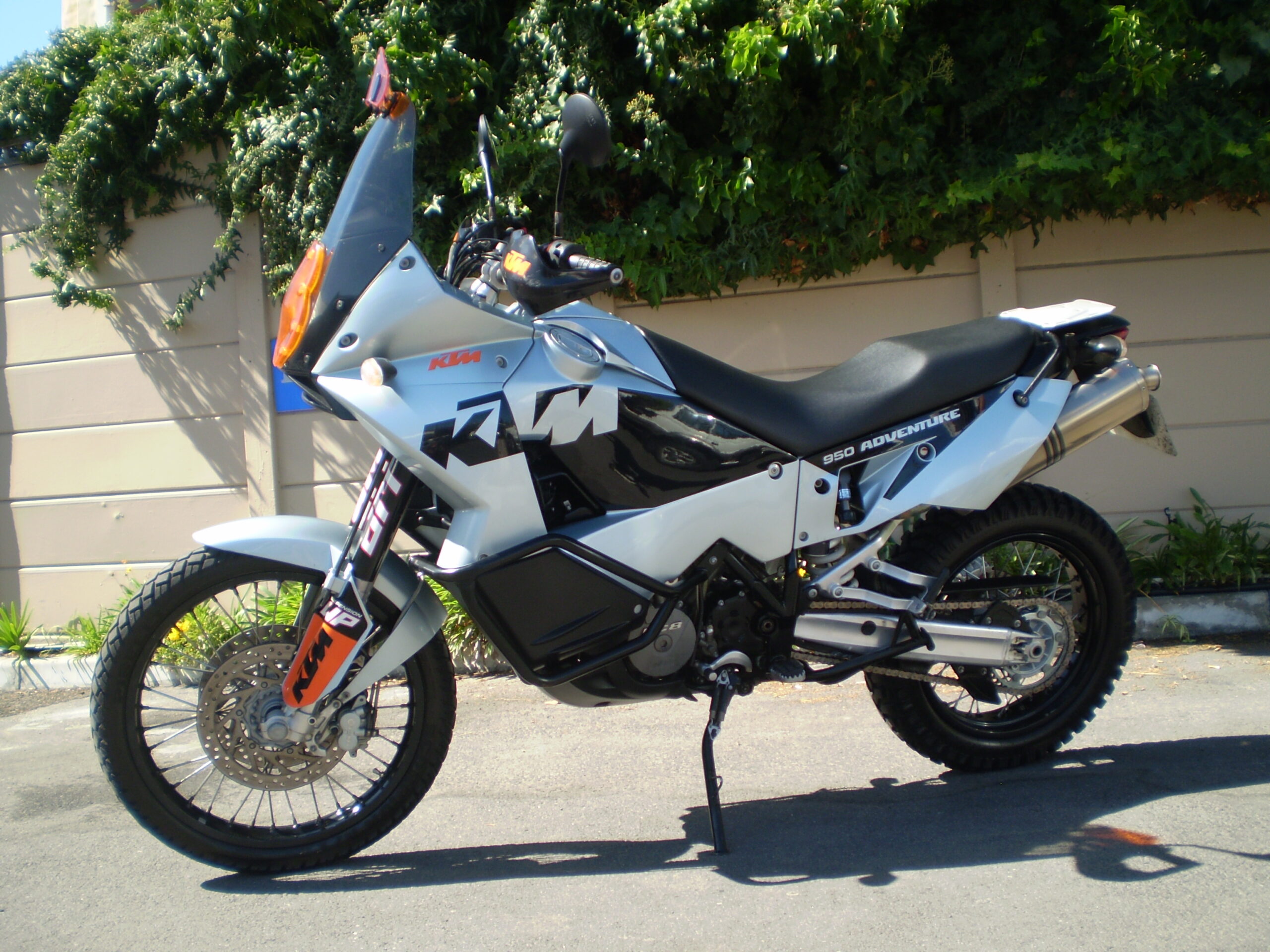
The 9X0 Cult
OG 9X0 riders will insist that the 950 is the model to have for its coveted smooth throttle response and simpler mechanical design (carbs, rudimental fuel pump & fuel filter) which means that less can go wrong and it’s comparatively easier to effect repairs on the trailside. Others will insist that the 950 Super Enduro is the model to have for its aggressive styling, cult-like status and lighter bust. When it comes to 990s, however, the most desirable models are undeniably the S and the R. Both the S and R feature WP’s tallest suspension (265mm) and lack ABS entirely – the way 9X0 riders prefer them.
For a more visual illustration of the 9X0’s abilities see Marco Iob and Edurak on YouTube.
| Specs | |
|---|---|
| Highlights | |
| • | 105 horsepower, liquid-cooled 999cc engine |
| • | 6-speed gearbox |
| • | 21-inch front wheel, 18-inch rear |
| • | 2x 10-liter fuel tanks |
| • | Fully adjustable WP suspension |
| • | No rider aids (ABS or traction control) |
| • | 9,600rpm rev-limiter |
| • | 209kg wet weight |
| • | Relatively low center of gravity considering the date of manufacture |
| Lowlights | |
| • | Brakes are less effective than they should be (rear especially) |
| • | No fuel gauge |
| • | Tubed rims are the approximate density of a block of cheese |
What It’s Like to Ride
Honestly, it depends. At sea-level, the high revving motor feels angry. At elevation though, it can feel rather tame, but it certainly is no couch. The riding experience on tarmac is neither inspiring nor entirely comfortable. It loathes long highway sections with its modest wind protection, relatively short cruising gear ratio and ‘on top of the bike’ seating position. Once you hit the dirt however, the bike really comes into its own. Suddenly that snappy throttle and dialed suspension combine flawlessly to transform the riding experience from one of contented passenger to engrossed, adrenaline-pumping, obnoxiously grinning fighter pilot. Endless skids and power slides.
The motor loves a thrashing. It thrives at ever-increasing rpm. The rear wheel breaks traction instantly and effortlessly. It is intoxicating yet confidence-inspiring in equal measure. The bike encourages you to push your limits. It dares you to attempt progressively more challenging obstacles and terrains. The riding experience is raw and unfiltered as the bike assumes zero riding aids, which can render it somewhat unforgiving to lesser experienced and adrenaline-intoxicated riders alike.
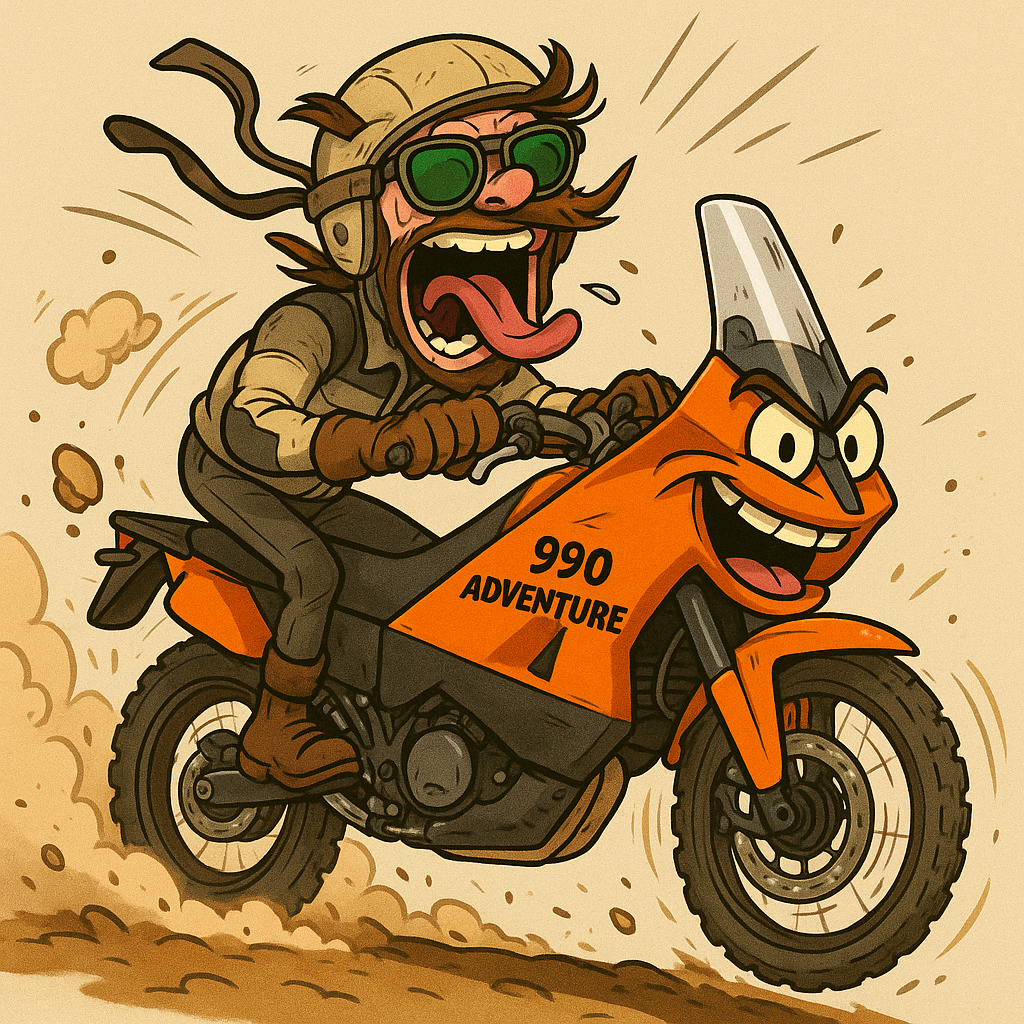
The Upside
Though subjective, the rally styling turns heads. The LC8 V-twin motor supplies ample grunt. The dual cans provide a tone like no other. The high compression motor enables considerable engine braking. Suspension is fully adjustable front and rear which enables a bike setup to your preference.
The Downside
“With great power comes great responsibility” is how I would describe the experience of owning a 9X0. High performance requires meticulous maintenance, and they are a bit of a pain to work on. For instance; the bike has three separate oil screens & filters; most jobs require removing one or both fuel tanks and the service interval is only 7,500km with valve clearance every other service. In short, 9X0s are best suited to the mechanically inspired serial bike tinkerer (check out FranksWay on YouTube).
From a riding perspective, one significant drawback is their range. Whilst 20-liters of fuel capacity might not seem an obvious limitation compared with current models, 9X0s average around 12 to 13 km/l which equates to only about 250km of range. 9X0s come stock with range anxiety.
Like all bikes, the 9X0s have some common faults/issues. Perhaps most common are issues related to the TPS (Throttle Position Sensor), clutch slave cylinder failure, water pump seal leaks and the tendency of rear brake reservoir sight glasses popping out.
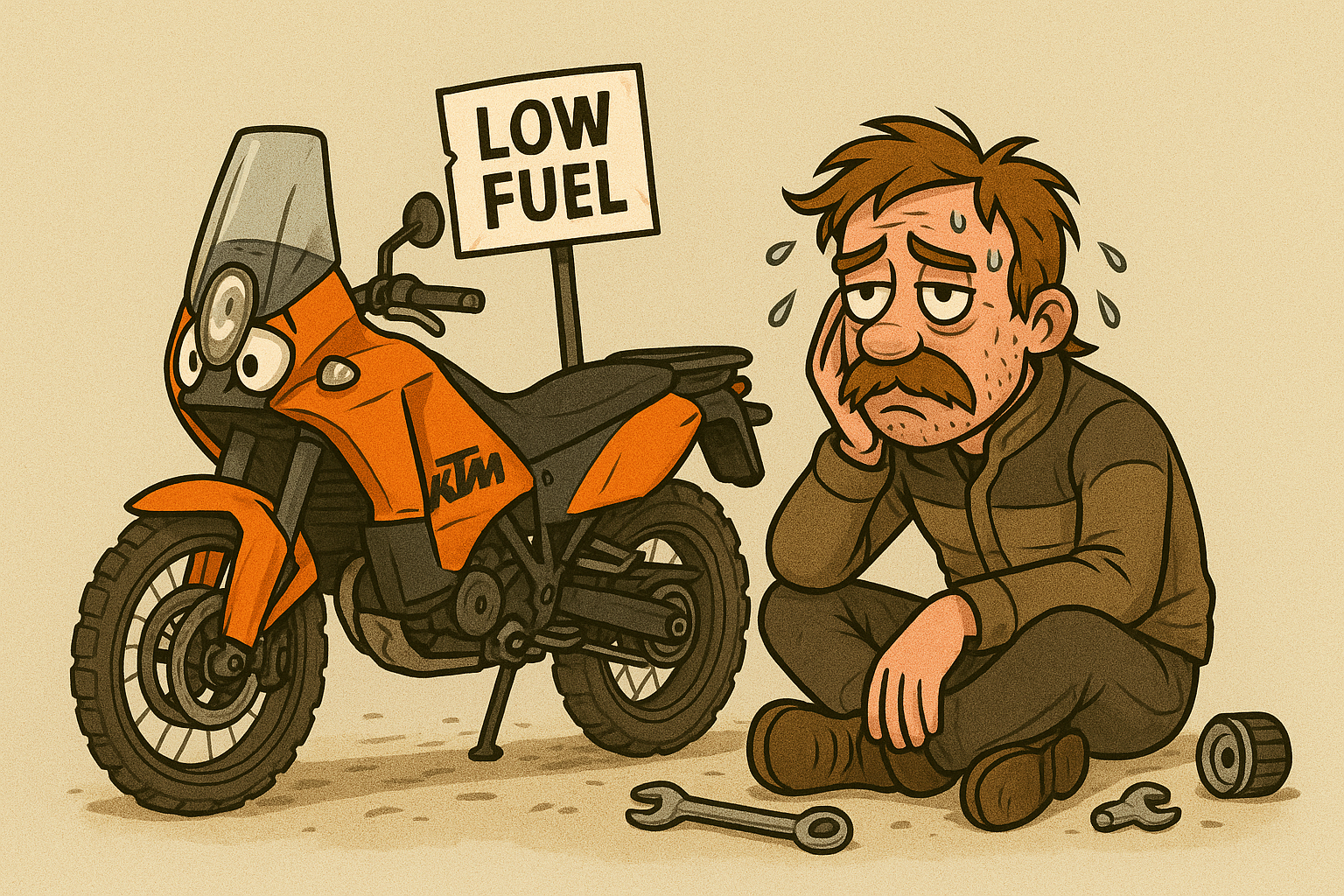
How Different Things Could Have Been
It’s no secret that Charley Boorman and Ewan McGregor’s *Long Way Round* documentary of 2004 was the single most influential event in adventure motorcycling history. It had a huge and lasting impact on the genre which can be observed even to this day, some twenty-one years after the fact. In planning for their trip, Charley and Ewan’s shortlist consisted of two motorcycles: the BMW 1150 GS Adventure and the KTM 950 Adventure. Ewan initially preferred the 1150 GSA, whereas Charley was besotted with the 950 at first sight. After test riding both bikes, Ewan was converted on the 950. As it turned out, KTM declined to provide promotional bikes (presumably fearing subframe failure) and the pair set off on their vanilla GSAs instead.
I’m convinced that KTM’s fortunes would have turned out rather differently had they simply provided those damned promotional bikes all those years ago. Instead, the handful of remaining 9X0 enthusiasts quietly endure with the knowledge of the best-kept secret. Remember that all it took for Ewan was a meagre test ride 😉
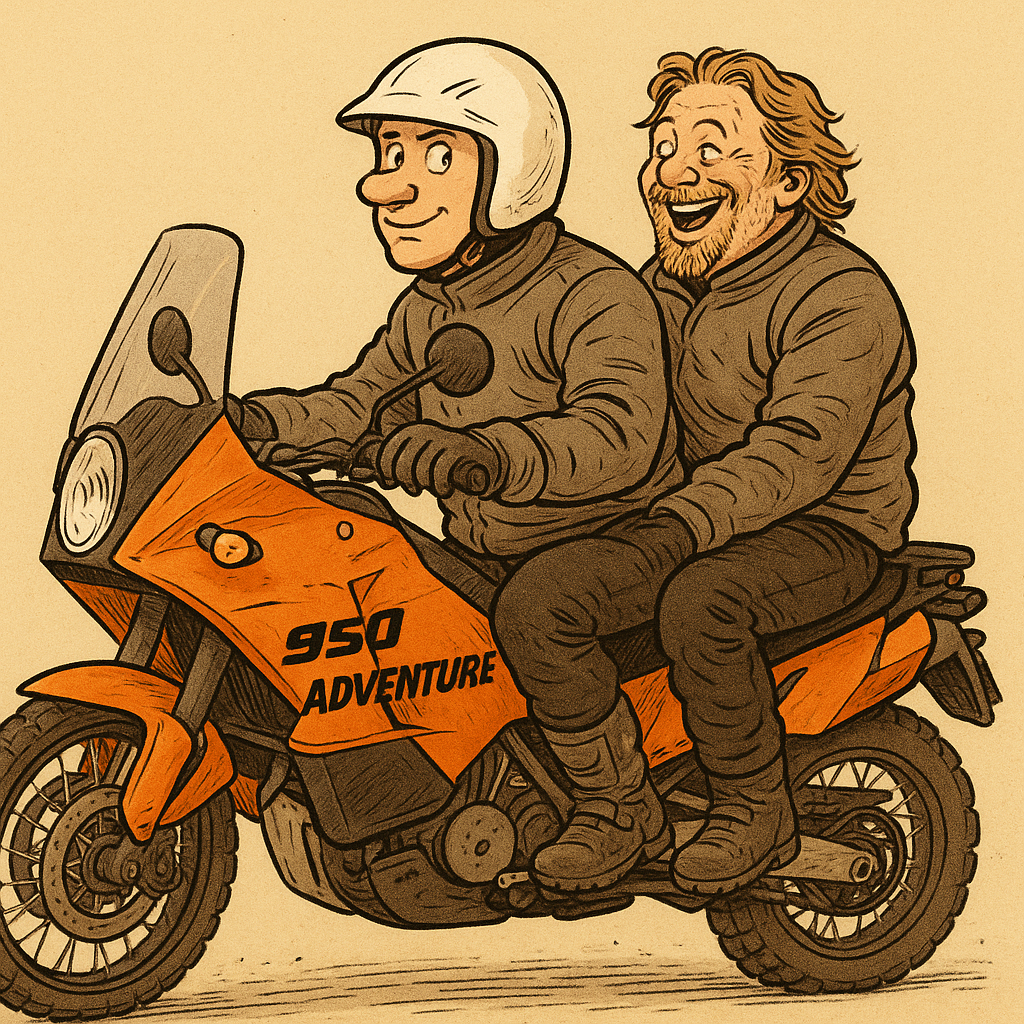
Whether you’re a die-hard 9X0 fan or just KTM-curious, the 990 Adventure still rips with a level of charm, chaos, and cult status that few bikes can match. It’s loud, raw, and unapologetic, and that’s exactly the point.
Safe riding, from all LekkerMoto.



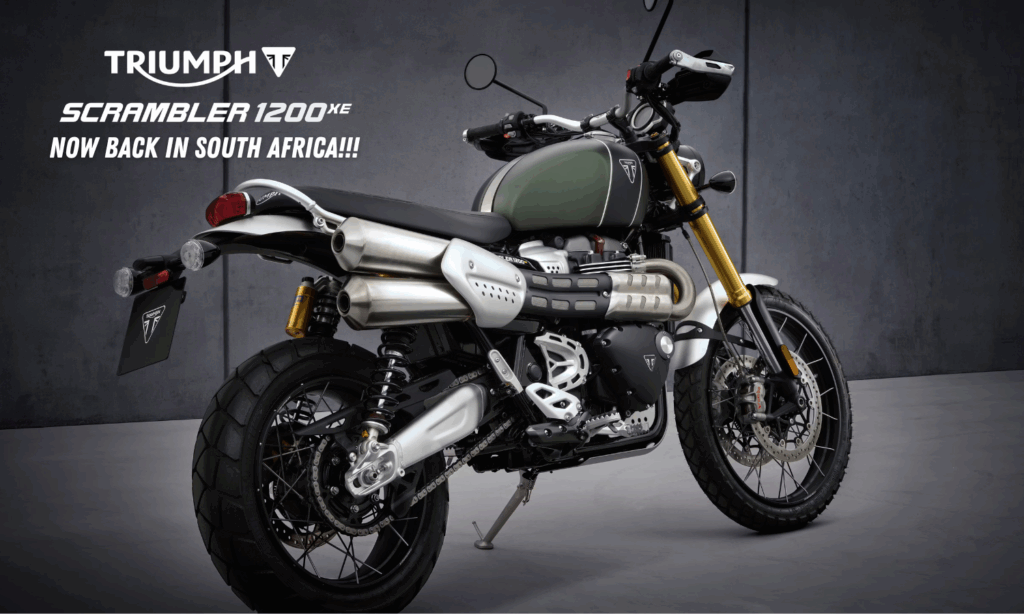



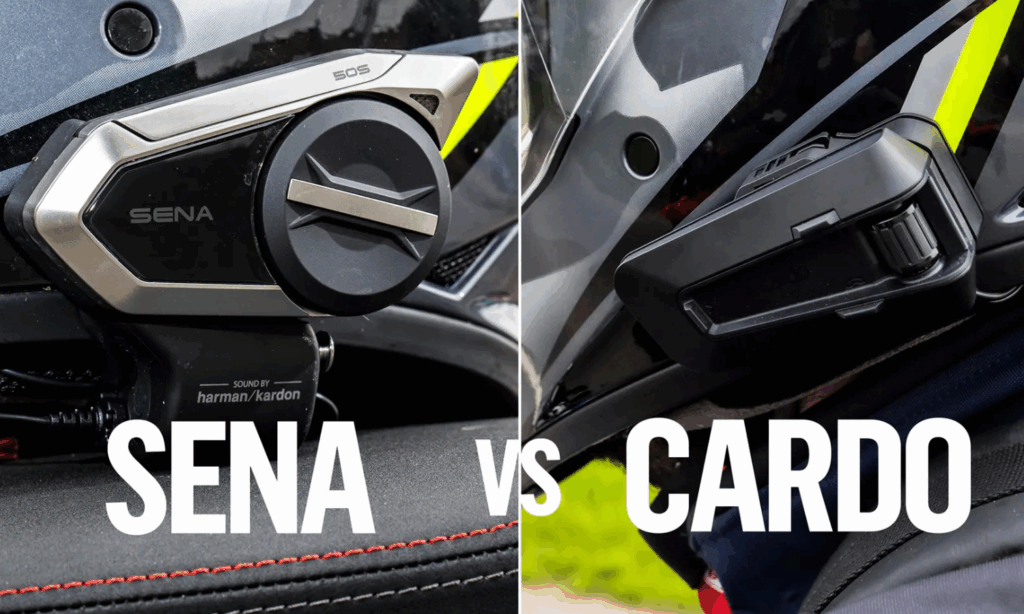



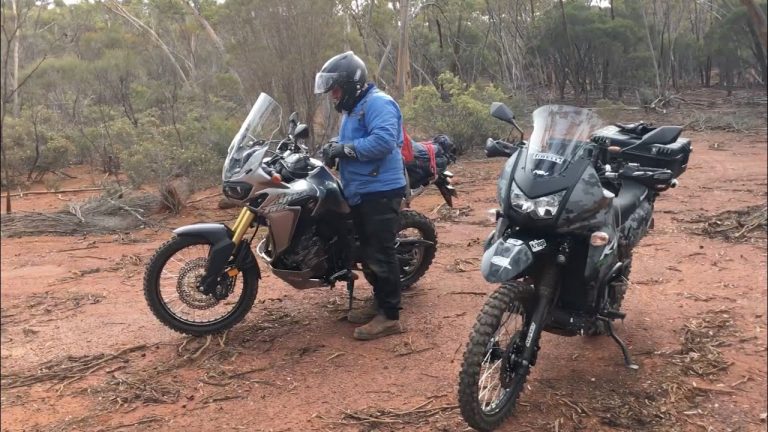
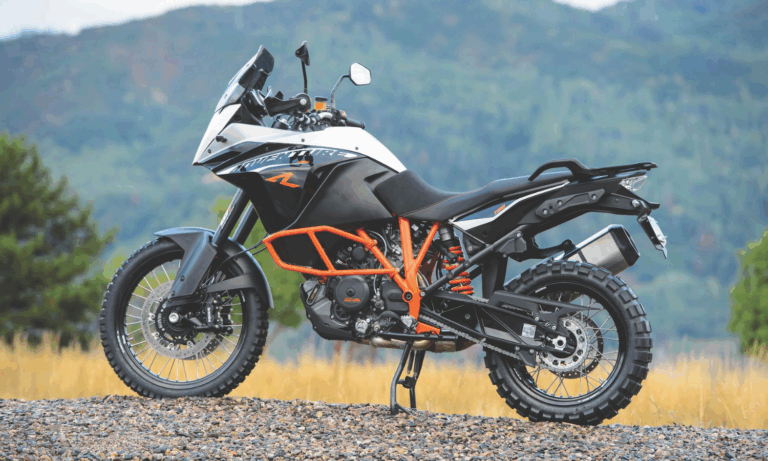
I think if KTM gave Charley Boorman and Ewan McGregor those bikes, it would have done a lot for the brand. However, if KTM suspected subframe failure, I can understand why the decision was made to hold back. It just seems like a missed opportunity for KTM, though.
Definitely a missed opportunity but would the bike have worked for them anyways? I think the KTM 990 has its valve clearance service every 15,000 km if I’m not mistaken. I think the GS has its every 30,00 km. That said the KTM would probably have been more enjoyable then the GS as its a lot nibbler and not so big and clunky.
The GS was probably the better option in terms of long distance riding and luggage. Not sure how well the KTM can be packed but would most defiantly have been more enjoyable especially offroad. Not sure if you have ever taken a GS offroad but its heavy AF.
Great write-up! The 990 Adventure really was ahead of its time, raw, capable, and packed with personality. Love how you highlighted its rally roots and mechanical simplicity, especially in today’s world of tech-heavy ADV bikes. Curious, though, do you think it still holds up on longer highway stretches compared to something like the Africa Twin or 790 Adventure?
@Jean Murphy hahaha the subframe failure reference was more of a tongue in cheek joke about the way Ewan and Charley loaded their bikes. They treated/loaded those poor GSs like caravans – KTMs are not exactly known for their towing capacity 😉
@Sylvester Stephenson they rode ~31,000km on their trip. The 990s would have had their challenges no doubt but they had full support crew and it would have made for some epic story telling.
Correct, valve clearance every 15,000km.
Agree 100% – see reply to Jean’s comment 🙂
@Garrard depends what you’re going for I guess but yes, if you want to go caravaning then the GS is definitely the best choice.
See reply to Jean’s comment 🙂
I have ridden GSs quite extensively. My first adventure bike was a 800GS. Have ridden the entire range: 800; 850; 900; 1200AC; 1200LC; 1250; 1300. They’re great bikes but certainly not my first choice when the going gets rough.
@Tommy Swartz Thank you!
I do think the 990s are a viable option compared with more modern alternatives but there certainly are compromises. It really depends on what you’re after. If my riding consisted mainly of 400-500km highway sections, I’d go for something more comfortable like a GS. If I rode mainly technical, slow and sandy desert tracks (and never needed to cruise between locations) then I’d go for a KTM 500. The 990 sits nicely in the middle of that spectrum with capabilities on either extreme (it’s pretty versatile).
I haven’t ridden an AT nor 790 but have ridden with and done trips with a number of guys that do. Aside from it’s poor range, the 990 isn’t far off of them on the highway – just don’t forget your ear plugs;)